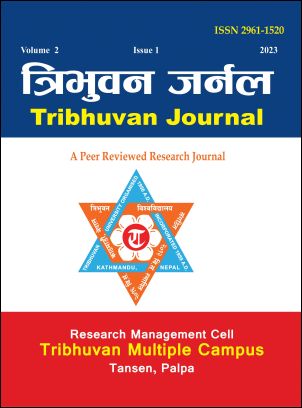Determinants of Internal Migration in Nepal
DOI:
https://doi.org/10.3126/tribj.v2i1.60265Keywords:
Internal migration, logit, binary, determinants, pull-push theoryAbstract
Migration has become an important livelihood strategy for many poor people. This paper aims to examine the determinants of migration in context of Nepal; using secondary Nepal labour force survey (2017/18) survey data, by employing both descriptive and analytical tools on it. The theoretical background of this paper is pull-push theory of migration. This paper uses logistic regression model, misspecification test, multicollinearity test, heteroskedasticity test and marginal effect for empirical data analysis. Migration decisions are significantly affected by marital status, educational level, gender, household size and new-urban but insignificantly affected by unemployment. The finding results show that marital status, sex, unemployment, educational level, new urban and household size are the reasons behind the migration decisions. Based on findings, this paper recommends that the government should provide skilled oriented qualitative education and equal employment opportunities in rural areas. The quantative education enhances the volume of migration. Similarly, the govt. should also reduce regional disparities between urban and rural areas.




